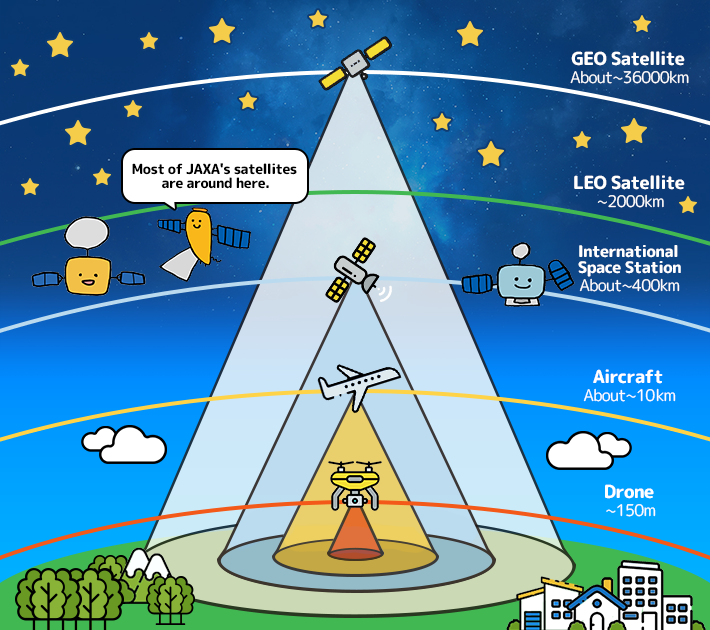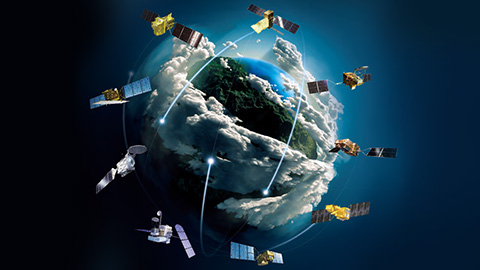Advantages of Earth Observation Satellites
Checkup of the Earth from the Sky
Remote sensing is a technique for observing the size, shape, and characteristics of an object from a distance. Therefore, it is very useful in situations where it is not possible to directly touch the object or actually go to the location to observe it. In particular, remote sensing from over the sky has the advantage of being able to acquire information on a wide area at once, and is useful for monitoring disaster situations, forecasting the weather, and understanding the global environment. Depending on the type of sensor and how high we want to observe, the candidate platform on which the sensor is mounted will change, and the information obtained from it, such as the observation target, observation range, resolution, and observation frequency, will also change.
Advantages of Earth Observation Satellites
When performing remote sensing from over the sky, typical candidates for platforms to mount sensors are drones, aircraft, ISS (International Space Station), and satellites. In general, the higher the observation altitude, the wider the area that can be observed at one time, but on the other hand, the resolution deteriorates.
Earth Observation Satellite
| Drone | Aircraft | ISS/LEO satellite | GEO satellite | |
| Observation area | About 0.1 ㎢ | About 1 -100㎢ | About 100 – 1000㎢ | About 1/3 of ground surface |
| Resolution | About 1 cm | About 3 cm -1 m | About 30 cm – 250 m | About 500 m – 2 km |
| Observation frequency | As required | As required | Once a few days | 24 hours |

Therefore, Earth observation satellites have the advantage of being able to observe the entire Earth uniformly, although the resolution is lower than that of drones and aircraft that observe from near the ground surface. In addition, once a satellite is launched into space, it will continue to make observations constantly until the end of its life, contributing significantly to understanding of the global environment and climate change, which require long-term and continuous monitoring.









